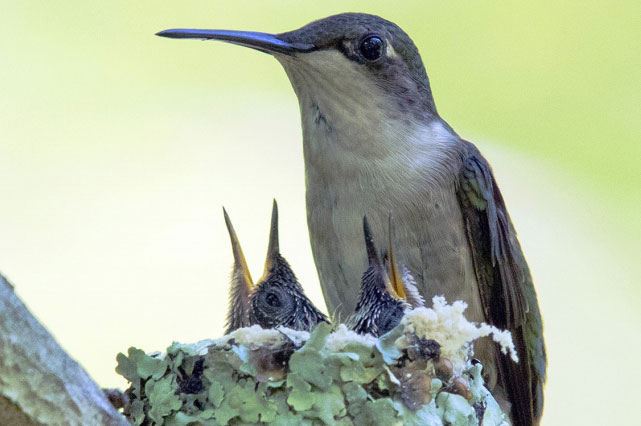NestWatch

NestWatch, developed by the Cornell Lab of Ornithology, is a nationwide nest-monitoring program designed to track status and trends in the reproductive biology of birds, including when nesting occurs, number of eggs laid, how many eggs hatch, and how many hatchlings survive.
Our database is used to study the current condition of breeding bird populations and how they may be changing over time as a result of climate change, habitat degradation and loss, expansion of urban areas, and the introduction of non-native plants and animals.

What can NestWatch offer land trusts?
Land trusts can use NestWatch’s online tools to track nesting success at one or several properties. Monitoring nesting success is a low-cost, high-return method of evaluating the impacts of restoration and management activities on birds, without the need for permits or extensive training. Surveying birds, by itself, only indicates whether or not birds are present in an area, but density alone can be a misleading indicator of habitat quality. By taking advantage of a professionally vetted nest-monitoring protocol, results from individual properties can be compared for differences in productivity while minimizing procedural differences in data collection. NestWatch also provides data analysis tools that allow any manager or volunteer to easily assess nesting success by site, treatment, or other groupings. Land trusts can benefit from encouraging landholders to collect baseline data before an acquisition is made, or easement or management plan is put in place, so that the conservation value, and any subsequent ecological improvements, can more easily be documented.
Nest-monitoring, particularly of nest boxes, could offer an entry-level way for volunteers to get involved with a land trust, and creates opportunities for birdwatching, educational demonstrations, and workshops for the public. Access to conserved acreage for non-consumptive users is a great way to promote community buy-in and introduce focal species (e.g., Prothonotary Warbler, Barn Owl, and Northern Flicker are among the many cavity-nesting species experiencing declines in part or most of their range) to the public on your lands.
See NestWatch.org for more information about how to participate.


